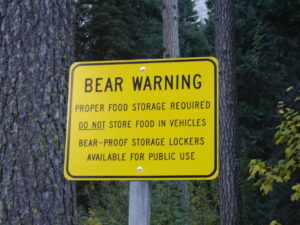
It’s a beautiful spring day. The flowers are blooming, the sun is shining and you want to go for a stroll around a park or picnic on the grass, maybe with your dog, or your kids, or your grandmother.
Are you close to a park with picnic tables and bathrooms, or do you have to drive 30 minutes to get to one? And how about your grandmother or your toddler?—can they walk comfortably at your local park?
What would you do if you didn’t know the answer to these questions? Maybe you’d decide to just stay inside.
While this thought experiment might seem a little silly, it’s representative of the many barriers that keep people from spending time outdoors.
But why is that so important?
The Value of Green Space
Green space has a wide variety of documented mental and physical health benefits.
Easy access to local green space encourages residents to spend time outside getting exercise, and spending time in nature can have a calming effect.
Green spaces also offer other benefits to communities like improved air quality, a reduction of stormwater runoff, and heat management. They provide spaces for residents to gather and have been shown to increase residents’ sense of belonging. A 2019 Lancet study on planetary health found that living near green spaces can perhaps even reduce mortality.
The Covid-19 pandemic has especially revealed the critical importance of access to such spaces.
But not everyone has equal access to green space.
Local green spaces might be very far away from your home or physically inaccessible. There might not be enough available pre-visit information for you to determine if you should or can visit, especially if you’re interested in a specific activity, like dog walking, or if you have a mobility disability.
Unequal Spatial Access

Many studies have found that green space in the United States is unequally distributed. One study of ten U.S. cities found that neighborhoods with a high percentage of adults who did not graduate from high school have less access to green space, especially access to wooded areas, when compared to neighborhoods with residents with higher levels of education.
The same study found that neighborhoods with high percentages of Latino or African-American residents have less access to green space, when compared to neighborhoods with majority white residents.
This can be particularly true in densely population urban areas. One rating system for the number of residents in major metropolitan areas living within a 10-minute walk of a park has determined that only:
- 25% of residents in New York City live within a 10-minute walk of a park
- 35% of Jacksonville residents live within a 10-minute walk of a park
- 36% of Indianapolis residents live within a 10-minute walk of a park
- An average of 55% of residents in the 100 largest metropolitan areas in the U.S. live within a 10-minute walk of a park
Check out what that percentage is for where you live here.
However, these problems are not limited to urban areas. Green spaces are often inaccessible via public transportation, and suburban and rural communities can be separated from green spaces by highways and often lack comprehensive public transit.

Unequal Access For Disabled People
The Americans with Disabilities Act mandates that when parks and recreation facilities are created or updated they must follow the ADA standard for accessible design, which requires the inclusion of accessibility features like accessible parking spaces, trails, bathrooms, public telephones, and seating areas.
But in reality many green spaces do not live up to these standards, and it can often be difficult to find reliable information about whether a certain park has these features, even online.
What percentage of green space is accessible or has accessible features is an under-researched area, especially in the U.S. A Danish survey, however, found that people with mobility disabilities spend less time in green spaces when compared to able-bodied people, even as studies found that disabled people have the same interests in visiting green spaces, and receive the same health benefits from visiting those spaces.
Unequal Safety and Information
Just living close to a park may not be enough to encourage you to visit if the park isn’t well maintained or lacks things to do. A 2022 study found that low-income people and racial-ethnic minority people have a reduced quality of access to green space, with a smaller number of amenities, less maintenance, fewer youth programs, and lower safety levels in their nearby parks.

Not knowing if a park is safe place for your kids to play or a place you will feel welcome can be a major barrier to visiting your local park.
What Can You Do?
Notice what features your local parks do and don’t have. You can document these features on public resources like All Trails or Google reviews in order to allow more people to visit comfortably. These features include trash cans, accessible bathrooms, wide or paved trails, not-steep trails, accessible bathrooms, or nearby public transit. Even if these features seem trivial to you they might be essential to someone else’s visit!
Join a local “friends of parks” organization and get involved in the management of your local green space to help publicize the rules and encourage more residents to visit!
Encourage the development of parks or green spaces in areas that don’t have enough—especially decommissioned construction areas!

More people should talk about these positive effects of nature. We noticed it right away after moving to Tokyo. In Oregon we had so much access to nature and now we have to travel far to access the same kind of experience.